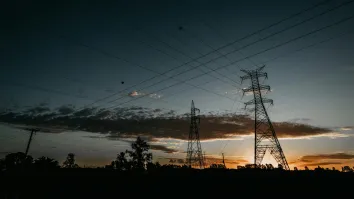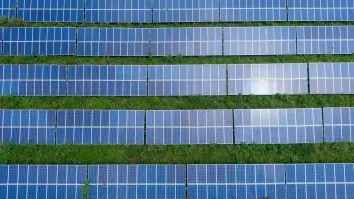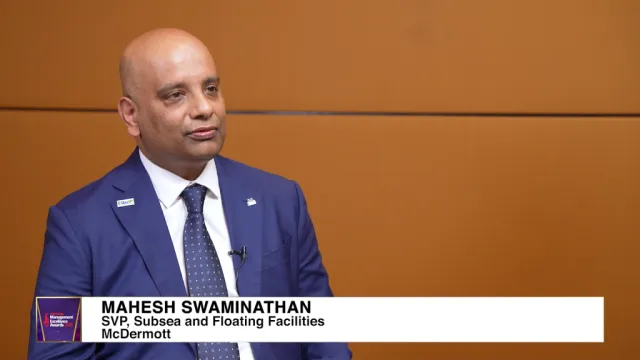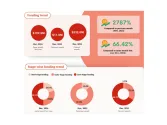
Asia-Pacific region should align energy, data centre plans
Renewable energy access is critical to market expansion.
Governments in the Asia-Pacific region should align energy and data centre planning to sustain growth, including designating sites as critical infrastructure, building renewable energy zones, and developing “data centre parks” with dedicated power, according to Linesight.
Such strategies could reduce transmission losses, attract long-term investment, and ensure projects are not stalled by grid constraints, Garvan Barry, regional director for North Asia at global construction consultancy Linesight, told Asian Power.
The region is the world’s fastest-growing data centre market, fuelled by artificial intelligence (AI) adoption, 5G rollout, and cloud demand. It posted four of the 10 biggest global deals in 2024, and capacity is projected to reach 94.4 gigawatts by 2028, he said in an emailed reply to questions.
Emerging markets like India, Malaysia, and Indonesia attract investors with low-cost land and favourable policies, whilst Singapore and Japan offer strong regulatory frameworks and reliable grids.
But power supply remains a critical bottleneck. India and Vietnam face grid capacity issues, while Singapore and Australia contend with ageing infrastructure. In Taiwan, new projects in the north are capped at 5 megawatts due to grid shortages.
Here’s the rest of the interview.
Is the Asia-Pacific region the place to be for data centres?
The Asia-Pacific region remains a premier destination of choice for global data centre operators. It continues to see strong data centre investments, fuelled by rapid AI adoption, widespread 5G rollout, digital transformation, and growing cloud demand, and it posted the highest global deal value in 2024, securing four of the 10 largest transactions.
Emerging markets like India, Malaysia, and Indonesia offer low-cost land, favourable policies, and room for AI-scale infrastructure, whilst advanced economies such as Singapore and Japan provide strong regulatory frameworks and grid reliability.
Linesight’s latest Construction Market Insights highlights that seven of the top 10 countries by 5G standalone reach were in the region, with India at 51% and Singapore at 37%. Markets like Japan, Singapore, and Australia are among the top 20 markets in both AI readiness and digital infrastructure. The data centre capacity in the region (excluding Japan) is also projected to grow steadily at a compound annual growth rate of 14.2% between 2024 and 2028 and reach 94.4 gigawatts by 2028.
However, the energy environment is a double-edged sword. Whilst many markets still rely heavily on fossil fuels, the region is witnessing significant renewable energy (RE) investments, particularly in solar, wind, and geothermal, alongside major grid modernisation programs to meet decarbonisation targets. In fact, it's reported that over 70% of global RE capacity growth in 2024 occurred in Asia, positioning the region to support sustainable data centre expansion.
How much in data centre opportunities is lost due to energy infrastructure and transmission gaps?
Whilst the Asia-Pacific region remains the fastest-growing region for data centres, its energy landscape is becoming a defining risk factor for data centre projects, and this is a key consideration for developers to watch.
Grid infrastructure and power availability are struggling to keep pace with the increasing demand for reliable, high-capacity power. Emerging countries like India and Vietnam, for example, experience capacity constraints. On the other hand, advanced economies like Singapore and Australia also have ageing assets that threaten grid stability.
Across South and Southeast Asia and Australasia, the data centre construction pipeline has surged, nearly doubling between the second quarter (Q2) of 2024 and Q2 2025, signalling strong market optimism. However, only 28% of this pipeline is under execution, down from 31% a year earlier, highlighting a slowdown in actual project delivery.
Access to power also remains a critical challenge from an execution point of view. Some developers have cited energy availability and transmission constraints as factors delaying site activation and project execution.
How can an efficient energy infrastructure accelerate the growth of the data centre market?
Efficient, grid-ready energy infrastructure is a force multiplier for the Asia-Pacific data-centre expansion. However, constraints in the energy infrastructure are potentially hindering that growth. For example, in Taiwan, new data centre projects in the northern region are capped at 5 megawatts (MW) due to power grid capacity limitations and the need to balance energy demands. This restriction, implemented by Taiwan Power Company, aims to manage energy consumption and ensure a stable power supply for all consumers.
Data centre sites may be ready to go in every other aspect, but a delay in the power supply to that site could add years to the delivery of a project. It could also mean that some projects are no longer feasible from a business case and end up being shelved.
What should be done to address the gap?
Renewable energy stands as a viable option to bridge the gap between power availability and grid constraints as a result of rising energy demand from the data centre boom in the Asia-Pacific region.
We are seeing countries devoting significant investments to bolster their renewable energy capacity. India is targeting the adoption of renewables by 2030, with major upgrades in transmission, storage, and cross-border links underway.
Singapore is constrained by land, with limited renewable potential, so the focus is on cross-border collaboration and smart energy imports and reducing gas dependency, whilst South Korea and Japan are making major investments in offshore wind and hydrogen as part of their decarbonisation strategies.
How can policymakers create an attractive environment for private sector investment in RE that’s tailored to the needs of large-scale data centre operators?
There needs to be government recognition that data centre infrastructure is a critical part of their national infrastructure to ensure the future economic needs of the country. Countries can then begin to plan their power strategy around this. For example, the UK recently designated data centres as critical national infrastructure, meaning data centres are considered essential for the country's security and economy, alongside other vital services like water and energy.
One innovative planning strategy is to develop strategic energy corridors for new asset classes such as data centres. This can include integrating data centre zoning with energy infrastructure planning, prioritising land use near hydropower plants, solar farms, and wind corridors to reduce transmission losses, and encouraging co-location of data centres with energy parks, enabling shared infrastructure and faster deployment.
Another strategy to create a more attractive environment for the private sector is to promote multi-use campuses for future technologies or “data centre parks” with dedicated power supplies. This can encourage the development of AI-powered labs, high-performance computing clusters, and research facilities within data centre campuses. It also creates innovation ecosystems that attract long-term investment and talent.
Aside from power availability, large-scale data centre operators need access to clean energy as the sector ramps up its decarbonisation efforts. Some governments, such as Australia, are investing in renewable energy zones, which are a cluster of large-scale renewable energy projects, and usually encompass new renewable energy generators and infrastructure, storage, and high-voltage transmission infrastructure.

















 Advertise
Advertise








